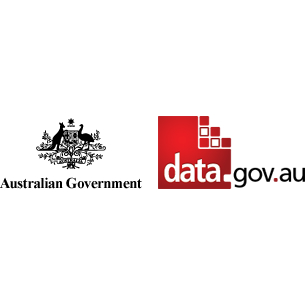Brief description
## **Abstract**This dataset and its metadata statement were supplied to the Bioregional Assessment Programme by a third party and is presented here as originally supplied.
The Database of Species of National Environmental Significance stores maps and point distribution information about Species of National Environmental Significance as listed in the Environment Protection and Biodiversity Conservation (EPBC) Act 1999, and, also weeds and feral species. Species covered include:
- threatened species
- migratory species
- marine species
- cetaceans
- non-native species that threaten biodiversity
- species in other countries covered by international agreements that Australia is a party to.
Threatened and migratory species data is available in a generalised gridded form for public download as the Species of National Environmental Significance Map Summary Version.
## **Dataset History**
The Spatial information is stored in a geographic information system and links to the Taxon and Species Profile tables through the taxon identifier.
Source data were provided from a range of government, industry and non-government organisations.
Testing is carried out using expert opinion, and/or through reference to published information.
The lineage of each species map is detailed in the stored item.
The map summary version consists of polygons of threatened or migratory species extracted from the database using a python script, gridded to 0.1 degree and converted to asc format. The gridded data is then placed in a map template and saved as a png format map with the extraction date and taxon id indicated. A summary table in csv format is appended as each identifier is extracted.
Source data acknowledgements:
Department of Environment and Heritage Protection, Queensland
Department of Environment and Primary Industries, Victoria
Department of Environment, Water and Natural Resources, South Australia
Department of Land Resource Management, Northern Territory
Department of Parks and Wildlife, Western Australia
Department of Primary Industries, Parks, Water and Environment, Tasmania
Office of Environment and Heritage, New South Wales
The Environment and Sustainable Development Directorate, Australian Capital Territory
Australian Museum
Museum Victoria
Queensland Museum
South Australian Museum
Tasmanian Museum and Art Gallery
Western Australian Museum
Online Zoological Collections of Australian Museums
Australian National Herbarium, Atherton and Canberra
National Herbarium of NSW
Northern Territory Herbarium
Queensland Herbarium
Royal Botanic Gardens and National Herbarium of Victoria
State Herbarium of South Australia
Tasmanian Herbarium
Western Australian Herbarium
Australian Bird and Bat Banding Scheme
Australian National Wildlife Collection
Birdlife Australia
Ocean Biogeographic Information System
Australian Government, Department of Defence
Forestry Corporation of NSW
University of New England
Geoscience Australia
CSIRO
Other groups and individuals
Data quality report - Absolute external positional accuracy:
The maps represent best available information and comprise a range of scales and reliability. Map summary species distributions have been generalised to 0.1° (\\~10km) grid cells.
Data quality report - Attribute accuracy:
Tests are undertaken to ensure that there are no errors for the following attributes:
- TAXON identifiers are unique, valid and within the allocated range
- Presence categories in the database are one of:
- Species or species habitat is likely to occur within area
- Breeding recorded within area
- Breeding or breeding habitat likely to occur within area
- Roosting recorded within area
- Foraging recorded within area
- Listed Critical Habitat
Generalised presence categories in the map summary version are one of:
2- Species or species habitat is likely to occur within area
1- Species or species habitat may occur within area
Where additional areas have been added to a distribution through the use of an automated modelling tool at a higher level of presence than existing mapped areas, they have been altered to the existing minimum values
Data quality report - Conceptual consistency:
Scripts ensure that each map has consistent fields, and standard codes are used throughout.
Data quality report - Completeness:
The database is being updated as the lists of species on schedules of the EPBC Act are amended, and new information on distribution becomes available. Updates are undertaken when new data becomes available and resources permit.
Based on sensitive species policies, the maps of these species are withheld from the map summary version : Wollemi Pine Wollemia nobilis (NSW); Spotted Handfish Brachionichthys hirsutus (Tas); Ziebell's Handfish, Waterfall Bay Handfish Brachiopsilus ziebelli (Tas); Red Handfish Thymichthys politus (Tas); Swan Galaxias Galaxias fontanus (Tas); Kings Lomatia Lomatia tasmanica (Tas). The distributions of migratory species such as shore birds may not reflect the total distribution within Australia but only show breeding sites, sites of significance or known locations.
For more information on individual species distributions, please contact the relevant state agency.
## **Dataset Citation**
Department of the Environment (1998) Australia - Species of National Environmental Significance Database. Bioregional Assessment Source Dataset. Viewed 13 March 2019, http://data.bioregionalassessments.gov.au/dataset/4eff885b-0d68-45e8-b4b1-e3e5448354eb.
Spatial Coverage And Location
text: POLYGON ((173.3982 -72.42695999999999, 173.3982 -8, 173.3982 -8, 173.3982 -72.42695999999999))
Subjects
Cooper subregion |
Galilee subregion |
Gloucester subregion |
Hunter subregion |
Namoi subregion |
Sydney Basin bioregion |
biota |
User Contributed Tags
Login to tag this record with meaningful keywords to make it easier to discover
Identifiers
- Local : 4eff885b-0d68-45e8-b4b1-e3e5448354eb
- URI : data.gov.au/data/dataset/11d4b1bc-fe65-4743-8c1c-4eee8c099894



